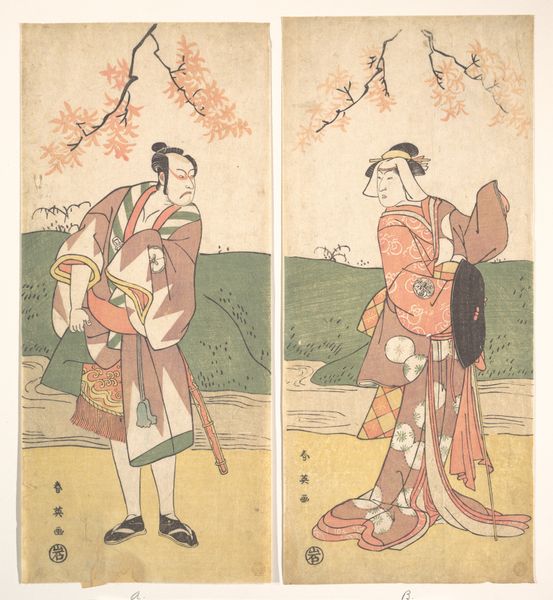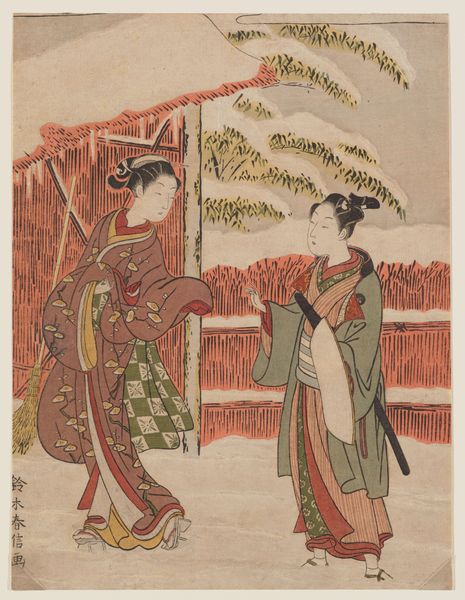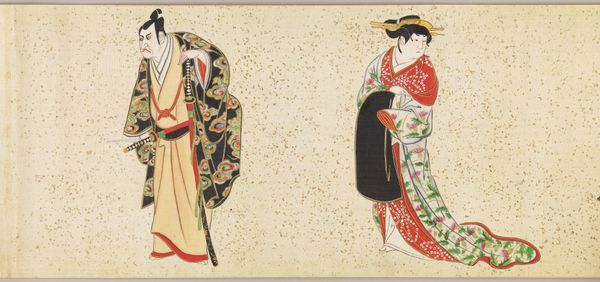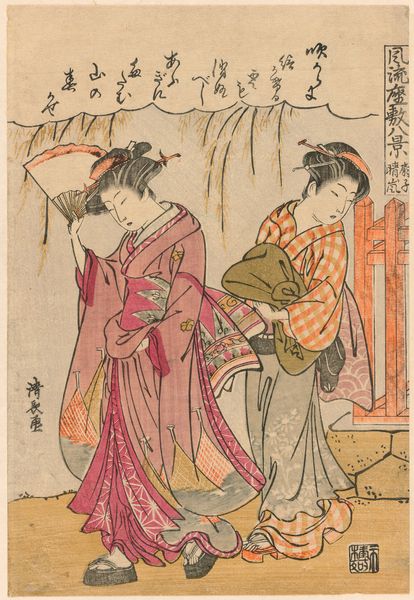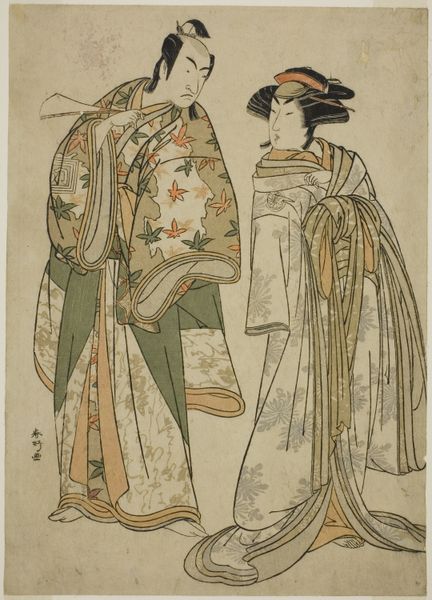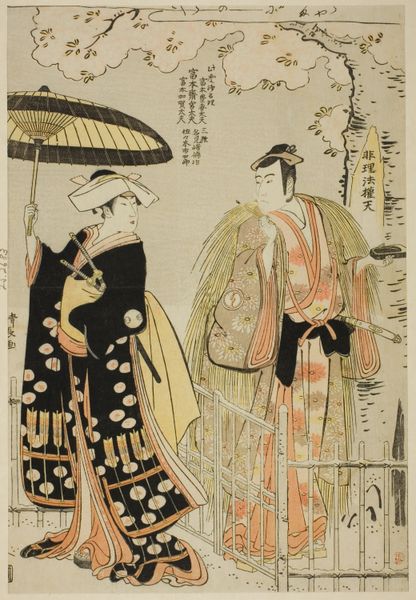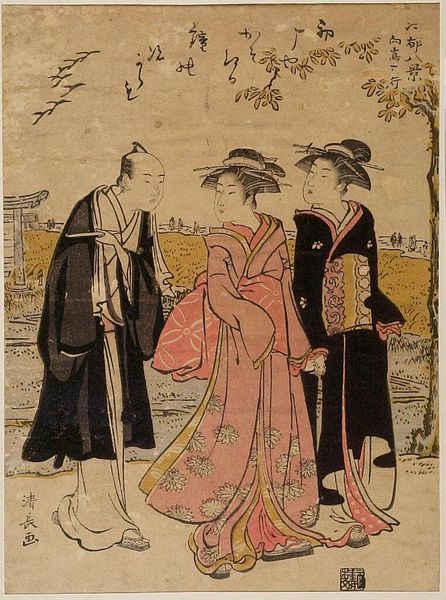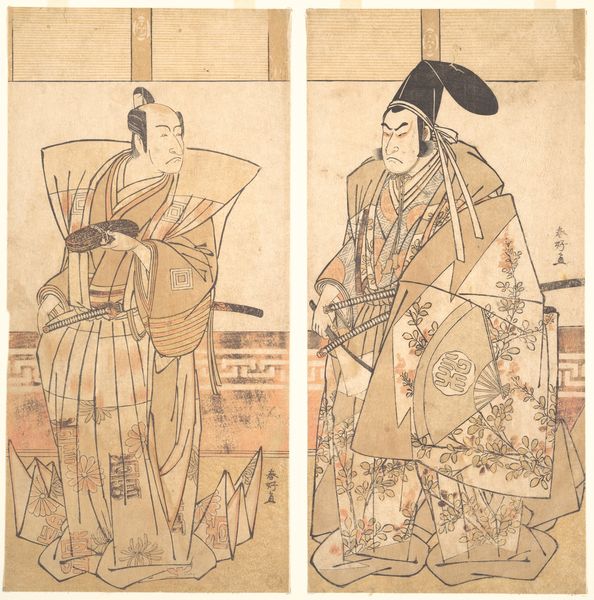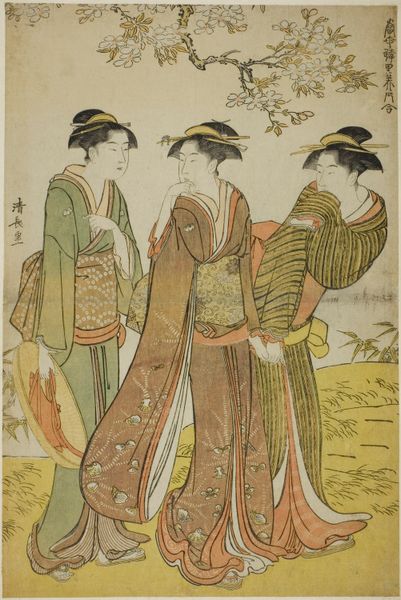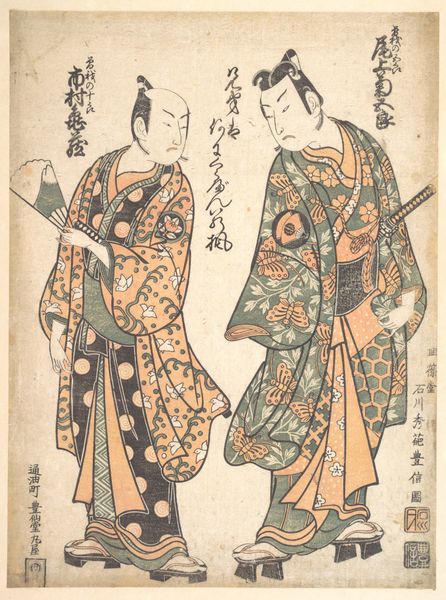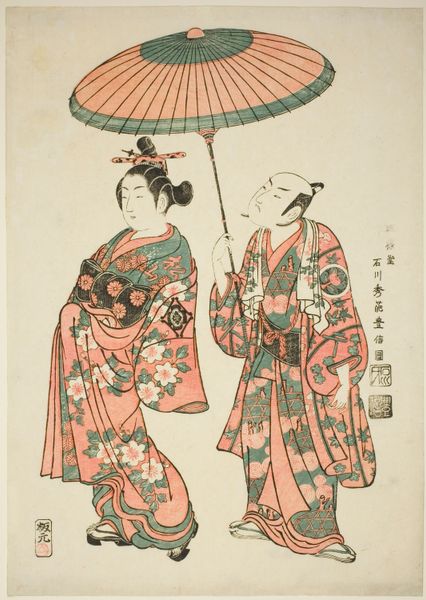
The Fourth Matsumoto Koshiro as a Man Dressed in a Short Kimono 1779
0:00
0:00
print, textile, woodblock-print
#
portrait
# print
#
asian-art
#
textile
#
ukiyo-e
#
figuration
#
woodblock-print
Dimensions: a: H. 12 13/16 in (32.5 cm); W. 5 3/4 in. (14.6 cm) b: H. 12 3/4 in. (32.4 cm); W. 5 11/16 in. (14.4 cm)
Copyright: Public Domain
Katsukawa Shunshō produced this diptych woodblock print depicting the actor Matsumoto Kōshirō IV sometime in the late 18th century. The two panels, now in the Met, represent a scene on a beach, and the male actor is dressed in a short kimono. This image is part of a larger history of Ukiyo-e prints that became popular in the Edo period, from the 17th to 19th centuries. These prints often featured actors, courtesans, and landscapes, catering to a broad urban audience. The commercialization of art in Japan allowed artists like Shunshō to produce affordable prints for a growing middle class. Shunshō, as a leading artist of the Katsukawa school, focused on portraits of actors, playing a key role in shaping the public's perception of theatrical celebrities. Understanding this print means looking at the Edo period's economic and social transformations. The Floating World of pleasure districts and theaters shaped artistic production, and sources such as playbills, diaries, and government records can help us understand the world that this print both reflected and helped to create.
Comments
No comments
Be the first to comment and join the conversation on the ultimate creative platform.
